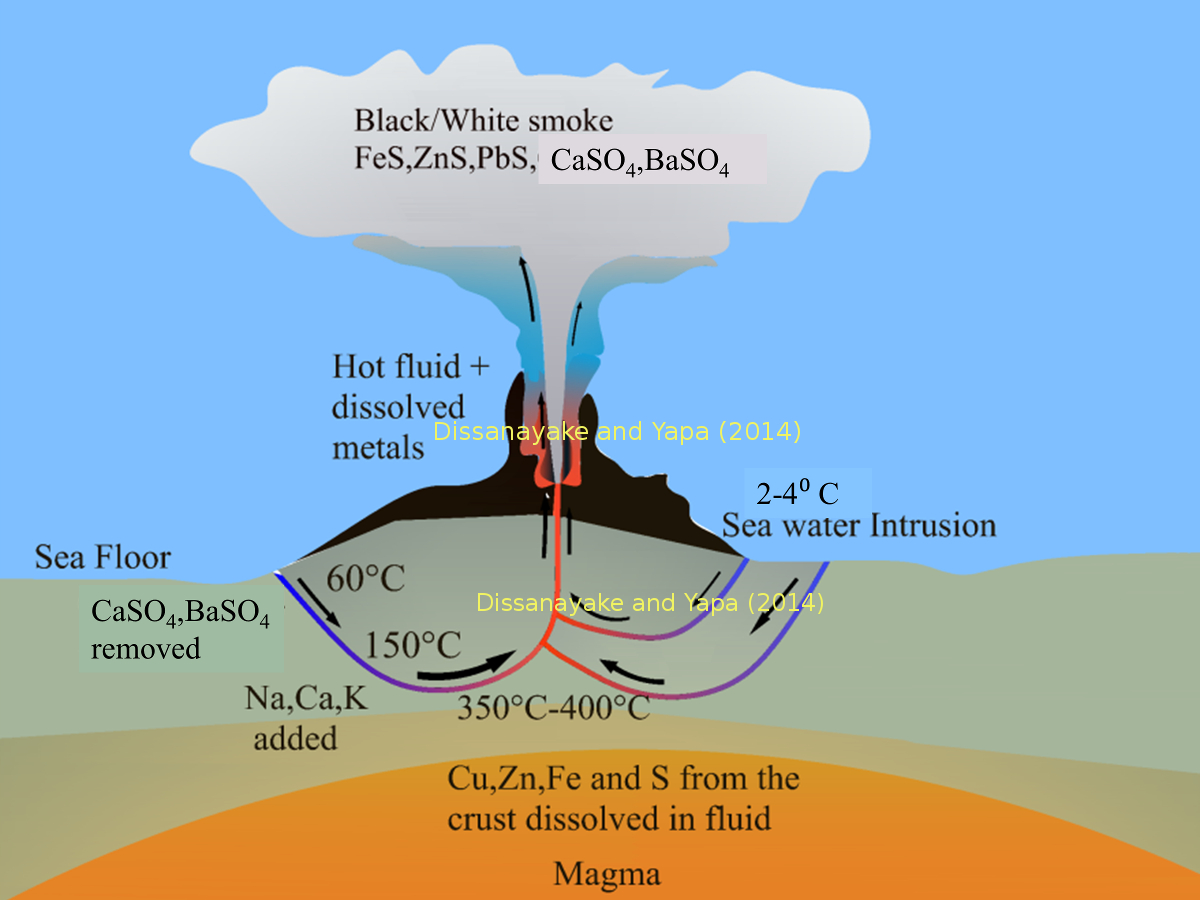
Poojitha D. Yapa
Professor of Civil and Environmental Engineering
Wallace H. Coulter School of Engineering
Clarkson University
Modeling Hydro-Thermo Vents
In many locations around the world, deep under ocean water extremely hot water (super heated water) at temperatures up to 400C is discharged in large quantities throughout the year. Cold sea water is seeped into the earth's crust and then in the ensuing travel through the crust (see Figure) the water becomes minerally very rich with compounds like copper, zinc, iron, and sulfur before coming out of earth's crust as super heated water. This fluid is called a hydrothermal fluid and it is released from the ocean floor with momentum and buoyancy. The hydrothermal fluids mix with cold, oxygen-rich seawater. Metals and sulfur combine to form black metal-sulfide minerals. Many hydrothermal minerals precipitate within seconds to form the dense particle plumes. The particles are mainly a mixture of Sulfides (e.g. Pyrrhotite FeS, sphalerite ZnS, chalcopyrite CuFeS2, etc.) and Sulfates (anhydrite CaSO4, barite BaSO4). Some of these minerals are formed as part of the chimney structures that builds up on the sea floor, while others are formed within the plume and dispersed through the water.
The constant supply of super-hot water can be a huge source of energy. The minerals formed can be extremely useful for many purposes. There are projects underway to tap these potentials. It should also be noted that in this very hostile environment there is a thriving life in abundance especially the tube worms.
In this project we are trying to model the hydrodynamics, thermodynamics, formation of chemicals and their spread in the ocean water as well as the ocean floor (for model details click here).


Experimenting, Developping Models and Sharing Knowledge on Deep Water Oil Related Problems for more than 20 Years

Clarkson University has a worldwide reputation for its leading oil and gas computational research More >>
Contact
- E-mail:
- pdy at clarkson dot edu
- Telephone:
- 315-268-7980
- Fax:
- 315-268-7985
- Address:
- Clarkson University
Box 5710,
130 Rowley Laboratories, Potsdam,
NY 13699-5710 U.S.A.